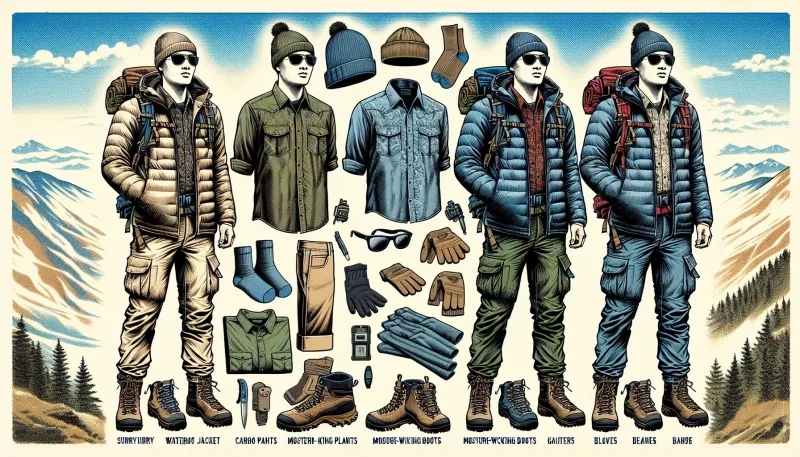Top 10 Outdoor Clothing Essentials for Hiking Adventures

Discover the top 10 outdoor clothing essentials for hiking to ensure a comfortable and safe adventure. Learn about the best gear for all weather conditions.
Are you planning your next hiking adventure but unsure about what to wear? Choosing the right outdoor clothing for hiking is essential to stay comfortable, safe, and prepared for any weather conditions. In this article, we'll cover the top 10 outdoor clothing essentials that every hiker should consider packing. Whether you're a seasoned trekker or a beginner, our comprehensive guide will help you make informed decisions to enhance your hiking experience.
1. Moisture-Wicking Base Layers
Your base layer forms the foundation of your hiking outfit, and it's crucial to choose moisture-wicking materials. These fabrics, such as polyester or merino wool, draw sweat away from your skin, keeping you dry and comfortable. Avoid cotton, as it retains moisture and can make you feel clammy and cold.
2. Insulating Mid Layers
The mid layer provides insulation to keep you warm in cooler conditions. Fleece or down jackets are excellent choices as they trap body heat efficiently. For versatility, consider a lightweight, compressible jacket that can be easily packed when not needed.
3. Waterproof and Windproof Outer Layers
Weather can be unpredictable in the great outdoors, so a reliable outer layer is essential to protect against rain and wind. Look for waterproof and breathable jackets with features like sealed seams and adjustable hoods. Gore-Tex and eVent fabrics are popular choices for high-performance outerwear.
4. Durable Hiking Pants
Quality hiking pants should be both durable and comfortable. Choose pants made from quick-drying, abrasion-resistant materials. Convertible pants with zip-off legs can be convenient for changing weather conditions, allowing you to switch between pants and shorts easily.
5. Comfortable Hiking Socks
High-quality hiking socks are crucial for preventing blisters and ensuring comfort on long hikes. Opt for socks made from merino wool or synthetic blends, which offer excellent moisture-wicking and cushioning properties. Avoid cotton socks, as they can cause blisters when wet.
6. Sturdy Hiking Boots
A good pair of hiking boots provides the support and protection your feet need on rugged trails. Choose boots that fit well, with sufficient room for your toes and adequate ankle support. Test them out before your hike to ensure they are broken in and comfortable.
7. Sun Protection
Protecting your skin from the sun is vital, even on cloudy days. Wear a wide-brimmed hat, UV-protective clothing, and sunglasses with UV protection. Additionally, apply a broad-spectrum sunscreen with at least SPF 30 to exposed skin and reapply as necessary.
8. Gloves and Hats for Cold Weather
If you're hiking in colder conditions, gloves, and hats are essential to prevent heat loss. Choose gloves that provide warmth without limiting dexterity, and look for insulated hats or beanies that cover your ears. Layering is crucial, so consider bringing multiple options to adjust as needed.
9. Gaiters for Muddy or Snowy Terrain
Gaiters are protective coverings that go over your shoes and lower pants to keep dirt, snow, and water out. They are particularly useful in muddy, snowy, or rocky conditions, helping to keep your feet dry and comfortable.
10. Backpack Rain Cover or Dry Bags
Protecting your gear from rain is just as important as protecting yourself. A backpack rain cover can keep your belongings dry during unexpected downpours. Alternatively, consider using dry bags to organize and safeguard important items inside your backpack.
Conclusion
Having the right outdoor clothing for hiking can make a significant difference in your overall experience. By investing in quality gear that suits various weather conditions and terrain, you can stay comfortable, protected, and prepared for any adventure. Remember to dress in layers, choose moisture-wicking and insulating materials, and prioritize durability and functionality. Happy hiking!



























